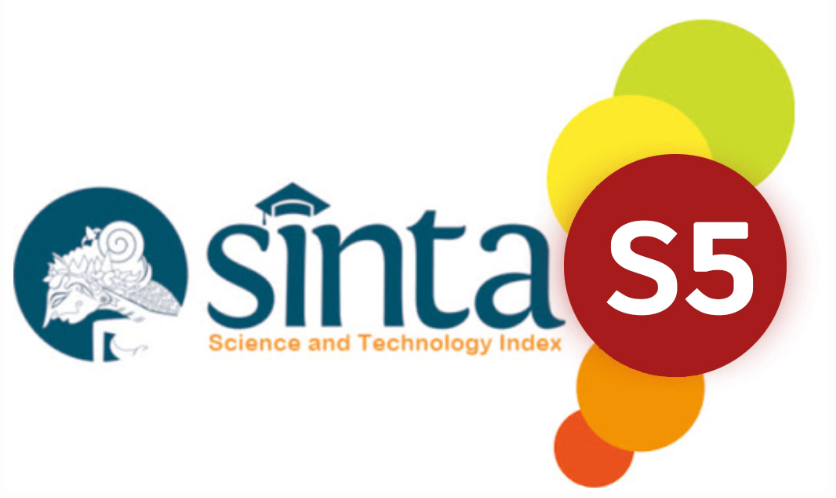A Literature Review on Arnold-Chiari Disease in Children (Evaluation of Surgical Approach and Post-Surgical Management)
DOI:
https://doi.org/10.32734/sumej.v8i1.16431Keywords:
arnold-chiari disease, children, posterior decompression surgery, post-surgical managementAbstract
Background: Arnold-Chiari (AC) disease in children is a complex congenital condition requiring multidisciplinary management. Surgical intervention is often necessary to correct affected anatomy and alleviate symptoms. Objective: To investigate surgical approaches and post-surgical management of AC in children and identify knowledge gaps. Methods: Literature search was systematically conducted through PubMed using relevant keywords. Inclusion criteria encompassed studies within the past 15 years pertaining to pediatric neurosurgery and Chiari. Results: Six relevant studies highlighted the importance of intraoperative electrophysiological monitoring, comparison of outcomes between posterior decompression with and without duraplasty, correlation of CSF flow with surgical outcomes, post-operative pain management, and indications for syringosubarachnoid shunt placement. Knowledge gaps remain regarding long-term effects of monitoring techniques, surgical outcome comparisons, CSF flow relationships, and pain management. Conclusion: Surgical intervention for AC in children is critical, yet meticulous post-surgical management is required. Cross-disciplinary collaboration and a holistic approach are necessary to enhance understanding and care of AC in children.
Downloads
References
Peach B. The Arnold-Chiari malformation: morphogenesis. Arch Neurol. 1965;12(5):527–35.
Rodríguez-Blanque R, et al. Chiari syndrome: advances in epidemiology and pathogenesis—a systematic review. J Clin Med. 2023;12(20):6694.
Kruyff E. Occipital dysplasia in infancy: the early recognition of craniovertebral abnormalities. Radiology. 1965;85(3):501–7.
Mehl LE, Astill J. Delirium, headache, and the type I Arnold-Chiari malformation. J Am Board Fam Pract. 1994;7(4):344–7.
Burton PM, McNamara DJ. Arnold-Chiari malformation (ACM) and syringomyelia (SM): a literature review & survey of ocular signs and symptoms. 1998.
Nogués MA, Benarroch E. Abnormalities of respiratory control and the respiratory motor unit. Neurologist. 2008;14(5):273–88.
Birns JW. An unusual form of laryngeal paralysis associated with Arnold-Chiari malformation. Ann Otol Rhinol Laryngol. 1984;93(5):447–51.
Fasano A, Tinazzi M. Functional facial and tongue movement disorders. Handb Clin Neurol. 2016;139:353–65.
Cai C, Oakes WJ. Hindbrain herniation syndromes: the Chiari malformations (I and II). Semin Pediatr Neurol. 1997;4(3):179–91.
Waldman SD. Atlas of common pain syndromes. 5th ed. Philadelphia: Elsevier Health Sciences; 2023.
EFNS Task Force on Diagnosis and Management of ALS. EFNS guidelines on the clinical management of amyotrophic lateral sclerosis (MALS)–revised report of an EFNS task force. Eur J Neurol. 2012;19(3):360–75.
Alzate JC, Kothbauer KF, Jallo GI, Epstein FJ. Treatment of Chiari type I malformation in patients with and without syringomyelia: a consecutive series of 66 cases. Neurosurg Focus. 2001;11(1):1–9.
Stevenson KL. Chiari type II malformation: past, present, and future. Neurosurg Focus. 2004;16(2):1–7.
Oro JJ, Mueller DM. Posterior fossa decompression and reconstruction in adolescents and adults with the Chiari I malformation. Neurol Res. 2011;33(3):261–71.
DiPietro MA, Venes JL, Rubin JM. Arnold-Chiari II malformation: intraoperative real-time US. Radiology. 1987;164(3):799–804.
De Barros MC, Farias W, Ataíde L, Lins S. Basilar impression and Arnold-Chiari malformation: a study of 66 cases. J Neurol Neurosurg Psychiatry. 1968;31(6):596.
Toader C, et al. Decoding Chiari malformation and syringomyelia: from epidemiology and genetics to advanced diagnosis and management strategies. Brain Sci. 2023;13(12):1658.
Arnautovic A, Splavski B, Boop FA, Arnautovic KI. Pediatric and adult Chiari malformation type I surgical series 1965–2013: a review of demographics, operative treatment, and outcomes. J Neurosurg Pediatr. 2015;15(2):161–77.
Lipton AJ, Gozal D. Treatment of obstructive sleep apnea in children: do we really know how? Sleep Med Rev. 2003;7(1):61–80.
Henderson FC Sr, Francomano CA, Koby M, Tuchman K, Adcock J, Patel S. Cervical medullary syndrome secondary to craniocervical instability and ventral brainstem compression in hereditary hypermobility connective tissue disorders: 5-year follow-up after craniocervical reduction, fusion, and stabilization. Neurosurg Rev. 2019;42(4):915–36.
White J. PubMed 2.0. Med Ref Serv Q. 2020;39(4):382–7.
Ebbert JO, Dupras DM, Erwin PJ. Searching the medical literature using PubMed: a tutorial. In: Mayo Clinic Proceedings. Elsevier; 2003. p. 87–91.
Sood A, Ghosh AK. Literature search using PubMed: an essential tool for practicing evidence-based medicine. J Assoc Physicians India. 2006;54(R):303.
Bramer WM, Giustini D, Kramer BMR. Comparing the coverage, recall, and precision of searches for 120 systematic reviews in Embase, MEDLINE, and Google Scholar: a prospective study. Syst Rev. 2016;5:1–7.
Tudor Car L, Li L, Smith H, Atun R. Cochrane review: Search strategies to identify observational studies in MEDLINE and EMBASE. J Evid Based Med. 2019;12(3).
Lu Z. PubMed and beyond: a survey of web tools for searching biomedical literature. Database (Oxford). 2011;2011:baq036.
McGirt M, Attenello FJ, Chaichana KL, Weingart J, Carson B, Jallo GI. Clinical and radiological predictors of treatment failure after suboccipital decompression for pediatric Chiari I malformation: analysis of 279 consecutive cases: 844. Neurosurgery. 2007;61(1):208–9.
Moncho D, Poca MA, Rahnama K, Sánchez Roldán MÁ, Santa-Cruz D, Sahuquillo J. The role of neurophysiology in managing patients with Chiari malformations. J Clin Med. 2023;12(20):6472.
El-Ghandour NMF. Long-term outcome of surgical management of adult Chiari I malformation. Neurosurg Rev. 2012;35:537–47.
Kheram N. Assessment of cerebrospinal fluid pressure dynamics in patients with degenerative cervical myelopathy [dissertation]. Zurich: University of Zurich; 2024.
Jirlow U, Hossain I, Korhonen O, Depreitere B, Rostami E. Cerebral contusions—Pathomechanism, predictive factors for progression and historical and current management. Brain Spine. 2024:103329.
Khalid H, et al. A comparative systematic literature review on knee bone reports from MRI, X-rays and CT scans using deep learning and machine learning methodologies. Diagnostics. 2020;10(8):518.
Poca MA, et al. Surgical outcomes in Chiari 1 and Chiari 1.5 malformation treated by posterior fossa reconstruction: a comprehensive analysis of 110 pediatric cases and literature review. J Clin Med. 2024;13(13):3852.
Mandelbaum SA. Exploratory study on the effects of Chiari malformation-I on cognitive, emotional/behavioral, and physical functioning in a pediatric population [dissertation]. New York: Yeshiva University; 2023.
Schultz KP, Kaplan J, Rappaport NH. The nuts and bolts of a successful non-narcotic perioperative enhanced recovery after surgery protocol. Aesthetic Surg J. 2021;41(11):NP1769–74.
Bapuraj JR, et al. Cerebrospinal fluid velocity amplitudes within the cerebral aqueduct in healthy children and patients with Chiari I malformation. J Magn Reson Imaging. 2016;44(2):463–70. doi:10.1002/jmri.25160.
Anderson RCE, Dowling KC, Feldstein NA, Emerson RG. Chiari I malformation: potential role for intraoperative electrophysiologic monitoring. J Clin Neurophysiol. 2003;20(1):65–72. doi:10.1097/00004691-200302000-00009.
Jiang E, et al. Comparison of clinical and radiographic outcomes for posterior fossa decompression with and without duraplasty for treatment of pediatric Chiari I malformation: a prospective study. World Neurosurg. 2018;110:e465–72. doi:10.1016/j.wneu.2017.11.007.
McGirt MJ, et al. Correlation of hindbrain CSF flow and outcome after surgical decompression for Chiari I malformation. Childs Nerv Syst. 2008;24(7):833–40. doi:10.1007/s00381-007-0569-1.
S MD, BJ T, TR S, JC WIII, O WJ. Efficacy of scheduled nonnarcotic analgesic medications in children after suboccipital craniectomy. J Neurosurg. 2004;100(2 Suppl):183–6.
Alzate JC, Kothbauer KF, Jallo GI, Epstein FJ. Treatment of Chiari I malformation in patients with and without syringomyelia: a consecutive series of 66 cases. Neurosurg Focus. 2001;11(1):1–9. doi:10.3171/foc.2001.11.1.4.
Ke XU, Ke REN, Chen Y. Application and evaluation of non-invasive examination for Budd-Chiari syndrome. 2007. LWW.
Prakash M, et al. A prospective study of CSF flow dynamics across foramen magnum in adult Chiari malformation/syringomyelia complex and its clinical correlation with outcomes after surgery. Asian J Neurosurg. 2024.
McKean GM, Tsirikos AI. Quality of life in children and adolescents undergoing spinal deformity surgery. J Back Musculoskelet Rehabil. 2017;30(2):339–46.
Koueik J, et al. Outcomes in children undergoing posterior fossa decompression and duraplasty with and without tonsillar reduction for Chiari malformation type I and syringomyelia: a pilot prospective multicenter cohort study. J Neurosurg Pediatr. 2019;25(1):21–9.
Humphrey E. Chiari malformations in adults: their surgical and nursing management. Br J Neurosci Nurs. 2019;15(3):130–6.
Spena G, Fontanella MM. Management of Chiari malformation. In: Surgery of the Cranio-Vertebral Junction. 2020. p. 483–99.
Chartier A, et al. [Chiari type I malformation in children: presentation in 34 cases]. Arch Pediatr. 2002;9(8):789–96.
Mishra A, et al. Arnold-Chiari malformations in pregnancy and labor: challenges and management strategies. Cureus. 2023;15(8).
Durvasula VSPB, O’Neill AC, Richter GT. Oropharyngeal dysphagia in children: mechanism, source, and management. Otolaryngol Clin North Am. 2014;47(5):691–720.
Shankar DR. A comprehensive study on craniovertebral junction anomalies [dissertation]. Chennai: Madras Medical College; 2014.
Sala F, Squintani G, Tramontano V, Coppola A, Gerosa M. Intraoperative neurophysiological monitoring during surgery for Chiari malformations. Neurol Sci. 2011;32(Suppl 3):317–9.
Barzilai O, Roth J, Korn A, Constantini S. The value of multimodality intraoperative neurophysiological monitoring in treating pediatric Chiari malformation type I. Acta Neurochir (Wien). 2016;158:335–40.
Vaishnav M, Gupta S, Vaishnav P. Psychiatric intervention pre- and post-bariatric surgery. Indian J Psychiatry. 2022;64(Suppl 2):S473–83.
Fuentes AM, Chiu RG, Nie J, Mehta AI. Inpatient outcomes of posterior fossa decompression with or without duraplasty for Chiari malformation type I. Clin Neurol Neurosurg. 2021;207:106757.
Akbari SHA, et al. Complications and outcomes of posterior fossa decompression with duraplasty versus without duraplasty for pediatric patients with Chiari malformation type I and syringomyelia: a study from the Park-Reeves Syringomyelia Research Consortium. J Neurosurg Pediatr. 2022;30(1):39–51.
Chotai S, Medhkour A. Surgical outcomes after posterior fossa decompression with and without duraplasty in Chiari malformation-I. Clin Neurol Neurosurg. 2014;125:182–8.
Saratsis AM, et al. ISPN 2023: 49th Annual Meeting of the International Society for Pediatric Neurosurgery. 2023.
Benzel EC, Traynelis VC, Le HN. Bibliography current world literature Vol 18 No 5 October 2005. Evaluation. 2004;56:1022–6.
AlAli KF. Congenital brain malformations: clinical and surgical aspects. Springer Nature; 2024.
Visintainer MA, Wolfer JA. Psychological preparation for surgical pediatric patients: the effect on children’s and parents’ stress responses and adjustment. Pediatrics. 1975;56(2):187–202.
Hida K, Iwasaki Y, Koyanagi I, Sawamura Y, Abe H. Surgical indication and results of foramen magnum decompression versus syringosubarachnoid shunting for syringomyelia associated with Chiari I malformation. Neurosurgery. 1995;37(4):673–9.
Soleman J, Roth J, Bartoli A, Rosenthal D, Korn A, Constantini S. Syringo-subarachnoid shunt for the treatment of persistent syringomyelia following decompression for Chiari type I malformation: surgical results. World Neurosurg. 2017;108:836–43.
Downloads
Published
How to Cite
Issue
Section
License
Copyright (c) 2025 Sumatera Medical Journal

This work is licensed under a Creative Commons Attribution-ShareAlike 4.0 International License.
The Authors submitting a manuscript do so on the understanding that if accepted for publication, copyright of the article shall be assigned to Sumatera Medical Journal (SUMEJ) and Faculty of Medicine as well as TALENTA Publisher Universitas Sumatera Utara as publisher of the journal.
Copyright encompasses exclusive rights to reproduce and deliver the article in all form and media. The reproduction of any part of this journal, its storage in databases and its transmission by any form or media, will be allowed only with a written permission from Sumatera Medical Journal (SUMEJ).
The Copyright Transfer Form can be downloaded here.
The copyright form should be signed originally and sent to the Editorial Office in the form of original mail or scanned document.











